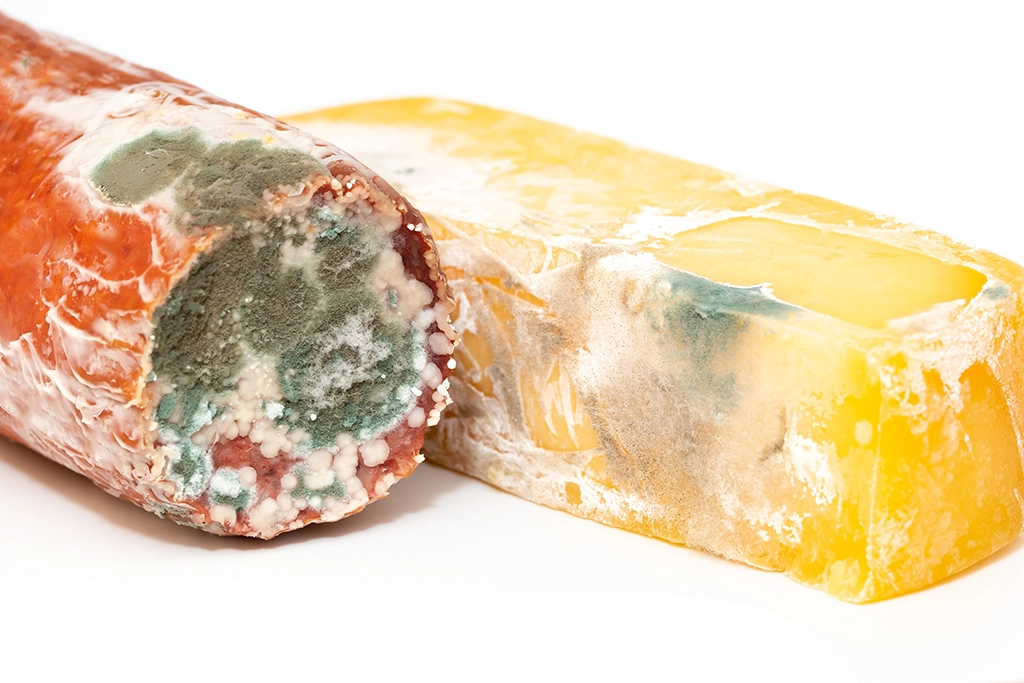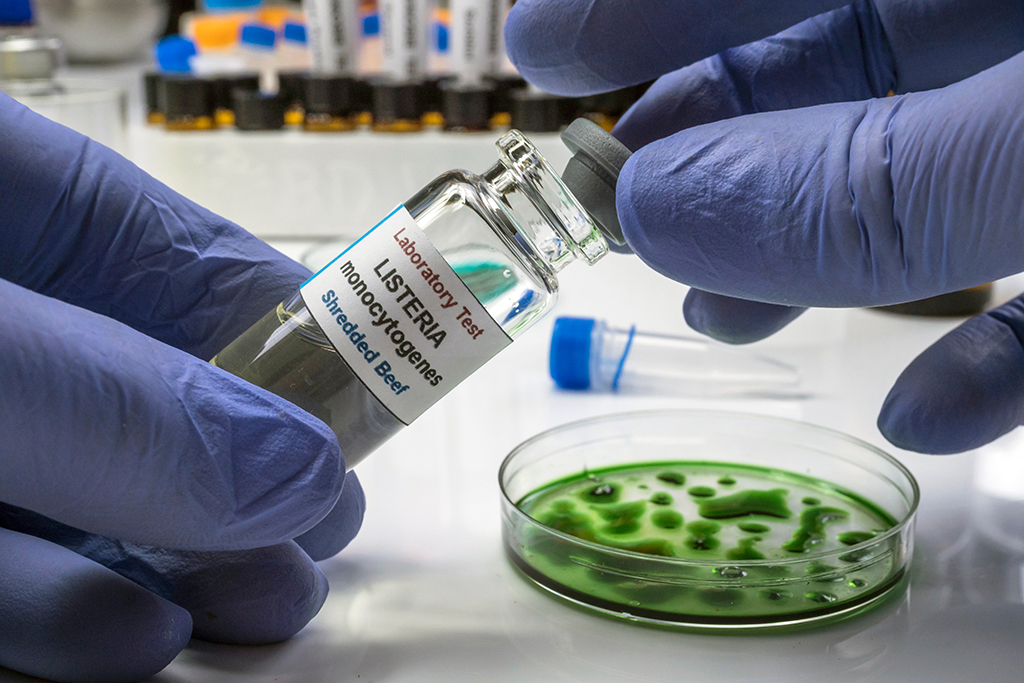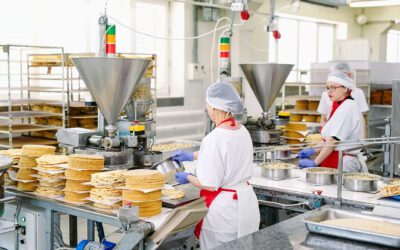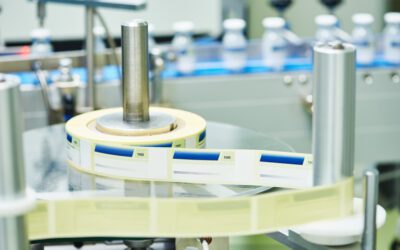Reviewed and Approved by Alex Brandt, Ph.D., FSNS Chief Science Officer
1-Minute Summary
- Conducting microbial challenge studies, or inoculated pack studies, is crucial to understanding how microorganisms behave in products during shelf-life.
- Two primary types are spoilage studies for quality assurance and pathogen studies for food safety, focusing on organisms like molds, yeasts, Listeria, and Salmonella.
- Challenge studies involve inoculating food products with specific microorganisms to monitor growth and assess safety and quality over time.
- These studies are vital for product development, quality assurance, and regulatory compliance, providing insights into potential risks and the effectiveness of preservation methods.
Understanding the Role of Challenge Studies in Food and Beverage Safety
Food products are populated with diverse types of microorganisms. Some are good, some are bad, and some are just plain ugly.
- Probiotics = Good
- Pathogens = Bad
- Spoilage = Ugly
Some of the bad and ugly microorganisms can grow in food and beverage products during their shelf-life. The bad ones can reach levels that can cause illness when an individual consumes the food or beverage. The ugly ones can cause spoilage and render the product unacceptable to consumers.
In addition to adverse effects on public health, both illness and spoilage can lead to brand damage and significant monetary loss for the producer.
Thus, it is important to understand how these organisms behave in food and beverage products during their shelf-life, and conducting a microbial challenge study, also called an “inoculated pack study”, in your product is one of the best tools to gain that understanding.
In this post, we will cover all you need to know about challenge studies in foods and beverages. Let’s get started.

What is a Challenge Study for Food Products?
A microbial challenge study is an experiment that seeks to understand the fate of a specific set of organisms when introduced into a food or beverage product and stored under a particular set of conditions.
What is the Purpose of Challenge Studies in Foods and Beverages?
The primary purpose of a challenge study in a food or beverage is to see if a particular type of organism will grow in the product when stored under its normal conditions for a period of time.
The idea is that the product’s intrinsic and extrinsic factors will inhibit the growth of the organism(s) of interest during the product’s recommended shelf-life, thereby resisting issues related to spoilage or pathogen outgrowth.
Intrinsic factors that inhibit growth of organisms include the following:
- pH
- Water activity
- Moisture
- Antimicrobials
- Salt content
Extrinsic factors that inhibit growth of organisms include the following:
- Packaging material
- Atmosphere
- Storage temperature
- Humidity
- Customer handling
A challenge study is like a shelf-life study, but the primary difference is that you inoculate the product with the target organism to track its growth over time. In contrast, the product is not inoculated for a shelf-life study.
A challenge study may also be referred to as an “inoculated pack” study.

help determine if the product will be safe for consumers
Different Types of Microbial Challenge Studies for Food
There are two basic types of microbial challenge studies for food:
- Spoilage studies (quality assurance)
- Pathogen studies (food safety)
It helps to think of spoilage studies as being conducted for quality assurance purposes, and pathogen studies as being conducted for food safety purposes.
In a spoilage challenge study, the food product is inoculated with organisms known to cause spoilage, including the following:
- Molds
- Yeasts
- Pseudomonas
- Lactic acid bacteria
Think of this type of study as pertaining to the product’s “Best Before” date. While most foods and beverages can be safely consumed after this date, it’s best to consume them prior to the “Best Before” date to ensure their appearance, flavor, texture, and odor are still at acceptable levels.
In a pathogen challenge study, the food product is inoculated with pathogens that can grow in the product, including the following:
- Listeria
- Salmonella
- Clostridium
- Staphylococcus
Think of this type of study as pertaining to the product’s “Use By” date. Foods and beverages should not be consumed after this date due to the elevated risk for pathogens to be present at high concentrations, which could cause foodborne illness in the individual who consumes the product.
Your production processes and HACCP food safety plan should include measures to reduce the risk of spoilage-organism or pathogen contamination; inoculating product for a challenge study helps to test the efficacy of those measures that are in place.

study pertains to its Use By date
Conducting a Spoilage Challenge Study in Food
Spoilage challenge studies are commonly used when the natural incidence rate of a spoilage organism in a product is too low to observe its impact on product quality with a standard shelf-life study (i.e. a study where no inoculation is done and the naturally present organisms are allowed to grow).
However, because it is still possible for that spoilage organism to be present in the packaged product (albeit at a low incidence rate), one must perform an inoculated pack challenge study to see what would happen if it were present.
Spoilage challenge studies are typically conducted over the course of the normal shelf-life of a product and often have an initial inoculation level of 100-1000 CFU/g (102 -103 CFU/g).
How to Set Up a Spoilage Challenge Study for Food
The steps to set up a spoilage challenge study in a food or beverage are similar to that of a shelf-life study.
- Begin the risk assessment with a review of the intrinsic and extrinsic factors of the product, discussed above.
- Identify the types of organisms that may potentially cause spoilage in the product.
If a particular type of organism that can cause spoilage prior to the coded shelf-life date is not expected to exist in the product at a high frequency under normal processing conditions, but is expected to occasionally be present, a spoilage challenge may be the best means of assessing spoilage potential.
For example, a heat-resistant mold may be present in a very low number of units of a thermally treated beverage but may present a high risk of early shelf-life spoilage in the units that actually have it. If the incidence rate of the organism is, say, 1% on a per-bottle basis, and the time to reach visible levels of spoilage, if present, is two months, it is possible that a shelf-life evaluation may see zero defective sample replicates if analyzed biweekly with 3 replicates per analysis point.
In this case, if understanding the risk associated with heat-resistant mold is desired, it would be more prudent to introduce the organism into the product via inoculation.

packaging or storage conditions change
When to Conduct a Spoilage Challenge Study for Food
Spoilage challenge studies are often conducted when a formulation, packaging system, and/or storage conditions are altered to either address a spoilage vulnerability or to achieve some commercial purpose (e.g. supply chain considerations, production efficiencies, etc.).
In this case, the purpose is to determine whether there will be additional risk taken, or assurance afforded, from the proposed change with respect to the organisms of interest.
An example of this is evaluating the viability of spoilage yeasts in a salad dressing when the manufacturer is changing the levels of, substituting, or removing sodium benzoate as a preservative.
In these types of evaluations, it is advisable to do a side-by-side challenge study on a previous iteration of the product, and on the proposed new version, to better understand the effect of the formulation change (e.g. the concentration/source of sodium benzoate).
Types of Pathogen Challenge Studies in Food
As mentioned above, certain spoilage organisms have such low natural incidence rates that they require inoculated pack challenge studies to evaluate their behavior in products. Pathogens, on the other hand, are expected to have even lower natural incidence rates in finished goods. Thus, it is almost guaranteed that one must perform an inoculated pack challenge study if one desires to observe the behavior of a pathogen in a food or beverage product during its shelf-life.
Pathogen challenge studies can be categorized into two types (growth and reduction) based on the anticipated performance of the organism in the product and the objective of the study.

Pathogen Growth Challenge Studies
For challenge studies where the primary concern is the rate of proliferation of a foodborne pathogen, an inoculation target in the 100-1000 CFU/g (102 -103 CFU/g) range is common. The product is usually evaluated over the course of its shelf-life or until the increase in concentration of the organism passes a critical threshold.
This approach is used in situations where there is both a reasonable risk of the presence, and subsequent growth of, the pathogen in the packaged product.
Pathogens that are frequent subjects of this type of challenge study are Listeria monocytogenes (e.g. deli meat, cheese, and other refrigerated ready-to-eat foods), Clostridium botulinum (e.g. reduced oxygen, low acid food), and Staphylococcus aureus (e.g. bakery goods of a sufficiently high water activity).

Pathogen Reduction Challenge Studies
The intent of pathogen reduction challenge studies is different than that of pathogen growth challenge studies because the pathogen of interest is actually expected to die over time in the product rather than grow.
This type of study is commonly used to determine the hold time required to achieve the required reduction of a pathogen in conjunction with a food safety plan. It differs from a pathogen growth investigation in that the inoculation level is higher (106 – 108 CFU/g), the duration of the study is usually shorter (until target reduction value is achieved and confirmed to be maintained), and it tends to focus on vegetative pathogens.
The higher inoculation level is necessary for a pathogen reduction challenge study to quantify the full extent of the reduction that can be achieved with the conditions of the product. The duration of the evaluation is also shortened to ensure that the minimal post-packaging hold time that provides a sufficient reduction can be observed via laboratory analysis.
Vegetative pathogens are frequently the subject of this type of investigation since they are more susceptible to inactivation via the intrinsic properties of certain food products.
Do I Need a Challenge Study?
Microbial challenge studies are excellent tools to strengthen your food safety program for a variety of food-industry personnel in multiple situations, including the following:
Product Development Teams
- New products that are susceptible to pathogen growth over time almost always undergo a challenge study during the development process.
- Challenge studies are often done when switching from conventional to natural antimicrobial sources to create a “clean label”.
- Challenge studies may be done when reformulating due to cost or supply chain issues.
- The inclusion of newly developed antimicrobials can be evaluated via challenge studies.
Quality Assurance Managers
- Providing data for regulatory purposes, such as USDA FSIS Listeria Guidelines – Alternative 1 and Alternative 2b.
- Validating the effectiveness of your HACCP system if product intrinsic and extrinsic factors are considered to be critical control points.
Restaurants/Retailers
- Demonstrating to local or state health departments the safety of holding your product at room temperature when they state it must be refrigerated (a.k.a. product assessment as stated in the FDA Food Code).
Operations Teams
- Installing gas flush (MAP) equipment.
- Including oxygen scavengers.
- Use of new packaging material or packaging machines.
The following are helpful questions to ask when determining if you need a challenge study for your food products:
- Do I have any new products that need to be tested to determine the potential outgrowth of certain microorganisms?
- Am I currently reformulating any products or changing any of our processing/packaging systems?
- Am I changing any processes that will affect my product’s ability to inhibit pathogen growth or spoilage?
- Do I need to have a product assessment to show that my products will not support growth of microorganisms under certain storage conditions?
How is a Challenge Study in Food Conducted?
Challenge study protocols are as varied as the products and conditions being tested, but they do share similarities. At FSNS Lab+, the contract research division of Certified Group, we conduct challenge studies according to the following general guidelines:
- Receive product samples in bulk (or already portioned in packages if special packaging systems are required):
o Bulk format samples are weighed in portions and inoculated.
o Special packaging systems may require septum inoculation. - Create a culture/cocktail of the target organism and adjust to the correct concentration:
o Refrigerated Food Association (RFA) guidelines suggest three-to-five strain cocktail of the target microorganism.
o Use strains that have a history with the food product (i.e. certain Salmonella serotypes with outbreak history).
o Ideally, use strains that have been isolated from the product.
o Concentration needs to be a specific range, generally 2-3 log CFU/g. - Inoculate the product and homogenize:
o Must account for product attributes like moisture when inoculating – the analyst may need to use less volume of a higher concentration of inoculum so that the moisture of the product is not greatly affected. Moisture introduced from the inoculum may artificially provide better growth conditions that would not normally be present.
o Need to inoculate and homogenize in a way that mimics the location that the contamination would be present in real-life. For instance, if a hot dog is being tested, then contamination would be naturally present on the exterior after cooking is done; thus, surface inoculation would be most appropriate. However, for a sour cream-based dip, the contamination could be mixed throughout the product, so inoculating and using a mixer to mix the inoculum into the product would make the most sense. - Portion into packages and provide correct atmosphere:
o Ambient air
o Vacuum packaging
o Modified atmosphere packaging - Store the product under normal storage conditions:
o Frozen
o Refrigerated
o Room temperature
o Temperature abuse - Pull replicate samples at various time points to enumerate:
o RFA guidelines recommend five to seven time points of analysis.
o Recommended to analyze at least duplicate (ideally triplicate) samples at each time
point of analysis in order to account for the level of variability at each time point. - Track counts over time in a graph:
o Raw counts
o Reductions/outgrowth compared to Day 0 - Stop at a certain point if counts are too high and after consultation with client:
o Generally, a 1 log CFU/g outgrowth signals a need to stop the study.
o May be able to tolerate up to 2 log CFU/g outgrowth as in USDA FSIS Listeria Guidelines. - Will often run chemistry tests on the samples:
o Monitor intrinsic factors like pH, water activity, moisture, salt, etc.
Points to Consider When Designing a Challenge Study in Foods and Beverages
Best practices for challenge studies include the following:
- Extend the test duration 10-25% beyond the intended shelf-life to have evidence that there is a buffer zone in case there is a real-life product or process deviation.
o The intended shelf-life should still be used in practice, but this provides extra assurance that there is no negative effect of product or process variations. - Inoculate with multiple strains of the subject organism.
- Determine the number of samples needed based on the number of target organisms that will be evaluated.
o It is best not to co-inoculate samples, meaning you need a separate set of samples for each organism. - Determine the number of time points during the study:
o More time points increase cost, but give you more frequent data points to fall back on when the study meets a failure point. This will help conserve precious shelf-life time.
o Less time points decrease cost, but there will be a longer interval of time between a failure point and the “last good check.” This risks losing precious shelf-life time. - Identify any special storage or packaging conditions required and ensure that the laboratory performing the study can properly execute the requisite conditions.
- Define the number of replicates per time point:
o More replicates are more expensive but provide a better measure of the variability from one sample to another.
o Fewer replicates mean less accounting for variability and may cause you to prematurely end the study if there is an outlier. - Determine which chemistry tests to run:
o RFA guidelines suggest water activity, titratable acidity, and pH be monitored over time in order to see if there are any changes in intrinsic factors that would affect microorganism viability.
o May also want to run salt, protein, fat, sugar, etc. at the beginning of the study to document the composition of the product for inclusion in a final report. - Conduct a shelf-life evaluation alongside the inoculated product:
o This will help determine the activity of the microorganisms that are naturally present in the product and will help evaluate whether they have an impact on the viability of the target microorganism. - Establish pass/fail criteria before the study:
o The laboratory and client should always know when results should trigger a discussion about whether the study should be concluded.
o May help save money by avoiding unnecessary analysis at future planned time points if a failure point has already been observed. - Should always re-evaluate the stability of the subject organisms after major changes to formulation, processes, or packaging.
Why Choose FSNS Lab+ for Your Challenge Study?
Properly conducting a challenge study requires expertise. For instance, the individuals conducting the study need to know how to choose the right microorganisms to inoculate with and the correct cocktail of strains that are known to cause issues with your product.
Also, the laboratory conducting the study typically needs to be equipped with special equipment needed to attain the correct concentration of inoculum, to package the product in the correct conditions, and to provide the correct plating media and methods.
Additionally, for pathogen challenge studies, the laboratory should have the proper biosafety procedures and biocontainment equipment in place to handle the microorganisms that are being used.
Last, but not least, you want a laboratory staffed with people who will communicate with you at your level throughout the process. The FSNS Lab+ team has an extensive team of experienced scientists who are well-versed in conducting spoilage and pathogen challenge studies for food, beverage, and consumer product manufacturers. Please contact us with any questions you have about designing a challenge study for your products.
You can also complete our short questionnaire to start the process of getting a quote for your challenge study.



